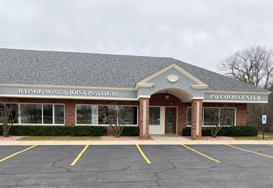As we have discussed in the past, a rheumatologist can treat a wide variety of diseases and conditions. Many people know that arthritis (both osteoarthritis and rheumatoid arthritis), lupus, and fibromyalgia are best treated by a rheumatologist. What most people don’t know is that these diseases fall into a confusing category called autoimmune diseases. To help clear up the confusion here are some of the more common diseases that rheumatologist treat:
Sjogren’s syndrome
A patient with Sjogren’s syndrome might first experience a dry mouth and eyes due to glands and membranes that keep things moist decreasing their production. Later on the patient may begin to experience fatigue, rashes, a dry cough, joint stiffness, and skin dryness.
Scleroderma (Systemic Sclerosis)
Most people think collagen is for beauty treatments, but for patients with scleroderma collagen builds up in their organs and skin. The typical symptoms of scleroderma are loss of hair, sores on the fingers and toes, hardening skin that may get darker or lighter, joint pain, breathing problems, and digestive issues.
Dermatomyositis
Most commonly seen in women, but not unheard of in men, dermatomyositis can cause a rash, inflammation, muscle weakness, difficulty swallowing, skin and eyelids that become purple, and shortness of breath. The cause of this disease is not clear, but some rheumatologists believe it is caused by a viral infection in the muscles.
Polymyositis
When a patient experiences a chronic inflammation of their muscles that causes their muscles to weaken it may be polymyositis. Most commonly seen in African American women between the ages of 30 to 50, this disease may cause difficulty speaking and swallowing, fatigue, shortness of breath, and increasing muscle weakness.
Polymyalgia Rheumatica
The inflammatory disease polymyalgia rheumatic only strikes people over 50 years of age causing tight and painful shoulders. A patient may also experience fever, anemia and fatigue.
Septic Arthritis
Occurs when bacteria like staphylococcus or streptococcus moves through the bloodstream and invades a joint, usually the hips and knees. Commonly the symptoms appear very quickly in only one joint and include swollen joints, fever, extreme joint pain, and a diminished ability to move the affected joint.
Sarcoidosis
Sacoidosis may not display any symptoms at all but may cause aching joints, fatigue, chest pain, rashes, hair loss, headaches, vision loss, nosebleeds and many other symptoms. It occurs when clusters of immune cells form in the skin, lungs, liver, eyes, lymph nodes or other tissues.
Gout & Pseudogout
Gout and pseudogout are very similar, both are caused by crystals forming in the joints. In gout, the crystals from uric acid, and in pseudogout they are formed from salt. Both can display symptoms that usually affect the knee, ankle or big toe. The symptoms can include joint pain and tenderness in one or more joints, arhtrits, joint swelling and fluid buildup.
Getting Treatment For Your Autoimmune Disease
Almost all autoimmune conditions and diseases are painful and debilitating. Getting expert treatment can quickly become a necessity. If you are experiencing any chronic pain, inflammation, or joint pain you need to get treated by a rheumatologist today. You won’t find better autoimmune treatment in the Chicago area than you do at the Illinois Bone and Joint Institute. Our patient centered care ensures you will receive compassionate and experienced treatment. Schedule online today to get your painful condition under control.
This information is not intended to provide advise or treatment for a specific situation. Consult your physician and medical team for information and treatment plans on your specific condition(s).




